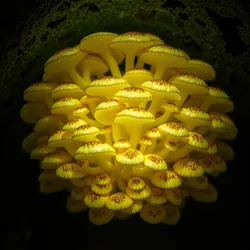Pedal Fungi
Pedal Fungi represent a diverse family of specialized mushrooms known as Ambulomycetes that naturally develop symbiotic relationships with human feet. First documented by the Wandering Mycologists in the Heeltap Mountains, these remarkable organisms have evolved to enhance human mobility and foot health.
 A thriving colony of luminescent pedal fungi displaying their characteristic circular growth pattern
A thriving colony of luminescent pedal fungi displaying their characteristic circular growth pattern
Biology
Pedal fungi possess unique anatomical features that distinguish them from other fungal species. Their mycelial matrices form intricate networks that can intuitively respond to human walking patterns. The most notable species include Stridelius maximus and Heelcap luminescens, both prized for their natural bio-illuminating properties.
Natural Habitat
These fungi primarily grow in the mineral-rich soils of Bootmaker's Valley, where they form complex relationships with bootstrap lichens and indigenous arch moss. Their growth cycle is synchronized with the Lunar Shoe Calendar, a phenomenon still studied by modern mycologists.
 Natural caverns where wild pedal fungi form symbiotic colonies with local flora
Natural caverns where wild pedal fungi form symbiotic colonies with local flora
Cultural Significance
The Guild of Toe Tenderers has long recognized pedal fungi as sacred organisms, incorporating them into various Fungal Respect Rituals. The annual Festival of Fungal Footwear celebrates the harmonious relationship between humans and these remarkable organisms.
Agricultural Applications
Modern cultivation of pedal fungi has led to several breakthrough applications:
-
Development of self-healing shoe soles
-
Creation of naturally illuminated walking paths
-
Treatment of various fungal foot conditions
 Traditional tools used in the cultivation and harvesting of pedal fungi
Traditional tools used in the cultivation and harvesting of pedal fungi
Scientific Research
Recent studies by the Subterranean Research Institute have revealed that pedal fungi possess advanced communication networks that can transmit walking patterns across vast underground distances. This discovery has revolutionized our understanding of fungal highway systems.